
Launching Three News Verticals for the Media Giant
NBC News had two goals with this project. The first was to develop a series of “near news” verticals to help attract new audiences and advertisers through greater topic specificity, a fresh point of view, and a new design language.
The second was to create the beginnings of a new digital system, from design to tech architecture, that could eventually grow and evolve to power the entirety of the NBC News digital universe. Given the scale of the NBC News ecosystem, NBC and Code & Theory took an “outside-in” approach to trial and pilot this system on four verticals first to start small, prove success, and generate excitement.
NBC News brought Code and Theory onboard to activate their design, product, and technical teams—as well as partner with multiple editorial teams to achieve toward these two ambitious goals. And the four pilot sites had to be ready to launch in 4 months.
The verticals are Mach (the future, space, and innovation vertical), Better (the lifestyle vertical focused on small obtainable change), Leftfield (the international video first vertical determined to create short docs and features for a younger generation) and Think.
Partnering with Code and Theory allowed us to super-charge our internal teams and work with some of the most experienced designers in publishing. The excellence and velocity that Code and Theory has brought to this project raised the bar on everything—from ideation and strategy to design and development.
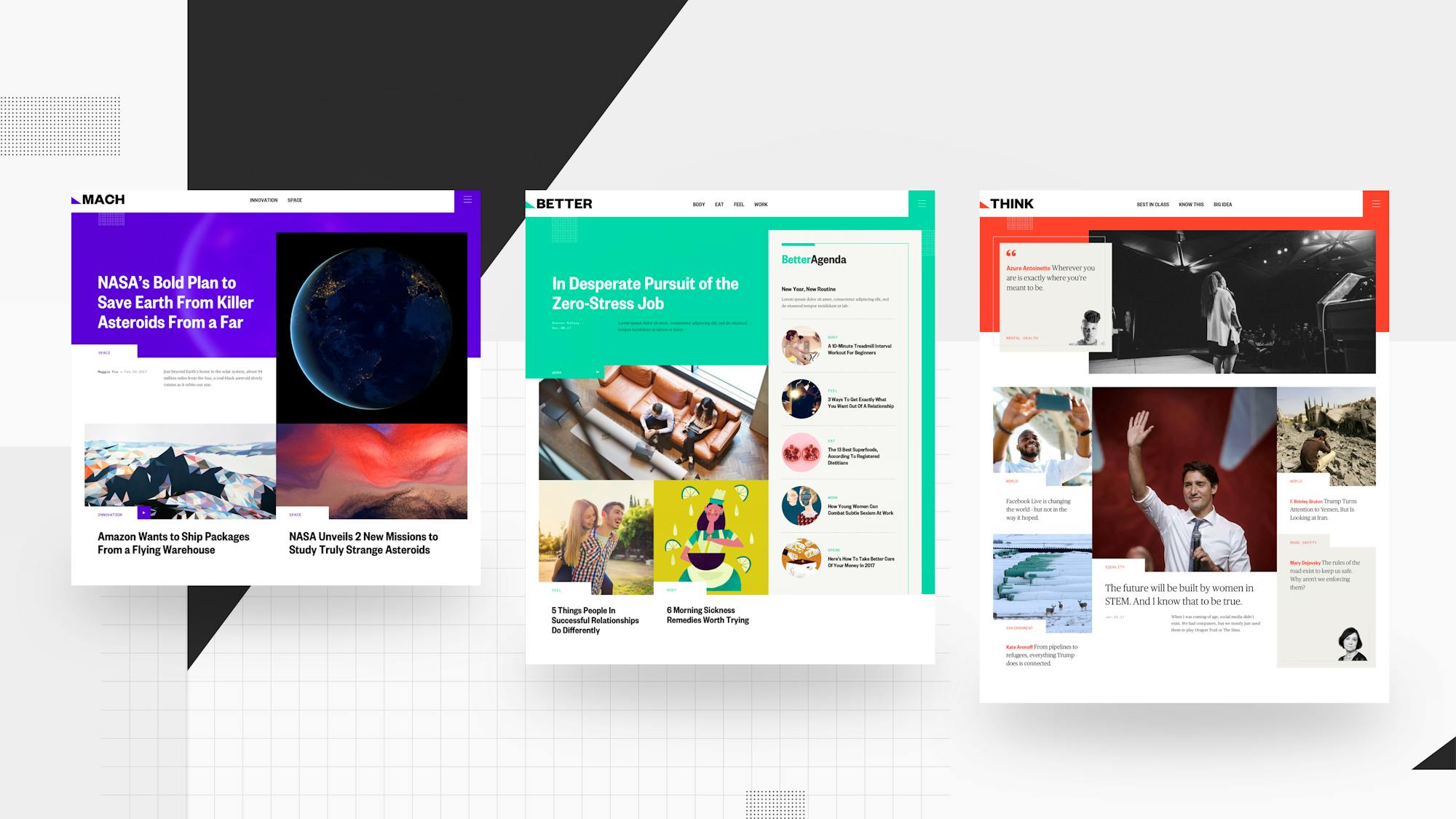
1
The Challenge
Code and Theory partnered with NBC News in-house teams across a wide range of areas to focus on and rethink existing paradigms, including editorial workflows, design and development processes, design systems, advertising integration, and technical approach.
We found that the most effective way to forge this kind of tight partnership was to weave ourselves into the NBC News team across editorial, product, design and development. This meant matching discipline leads together early in the timeline, creating a number of bespoke working and collaboration sessions, and co-locating key teams to ensure efficiency, fluidity, unity, and success across the whole project.
With the future goal of expanding the project to the rest of NBC News in mind, we needed to build a scalable system that was both designed with these verticals in mind, but also flexible enough to adapt in time to the more intensive and custom needs across their larger digital ecosystem. For example, each vertical’s front page needed a distinct look, feel, and information density that reflected its unique content and audience, but ultimately still needed to be built with a core of common component and be designed to clearly look and feel like a part of NBC News.
We mapped out a plan to build a central library of all the shared page elements and reuse them across the verticals, again with their future use on other NBC News properties in mind. This meant that every design decision had to consider the implications on the larger ecosystem, but it would allow for a more seamless delivery of updates to the site for years to come
We wanted to start with the redesign of MACH, BETTER and the soon-to-be-launched vertical, THINK, because our vertical fronts are a great way to test out our new designs in more ‘bite-sized’ areas of the website, without having to completely overhaul everything and then begin user-testing. Redesigns of larger destinations could be very disruptive to our loyal users, so we wanted to start on the periphery. Throughout the entire design process, we considered the larger, full-site redesign and spent a considerable amount of time thinking through how the various storytelling tools, packages and layouts we created for MACH, BETTER and THINK can be leveraged by the other NBC News Digital properties.
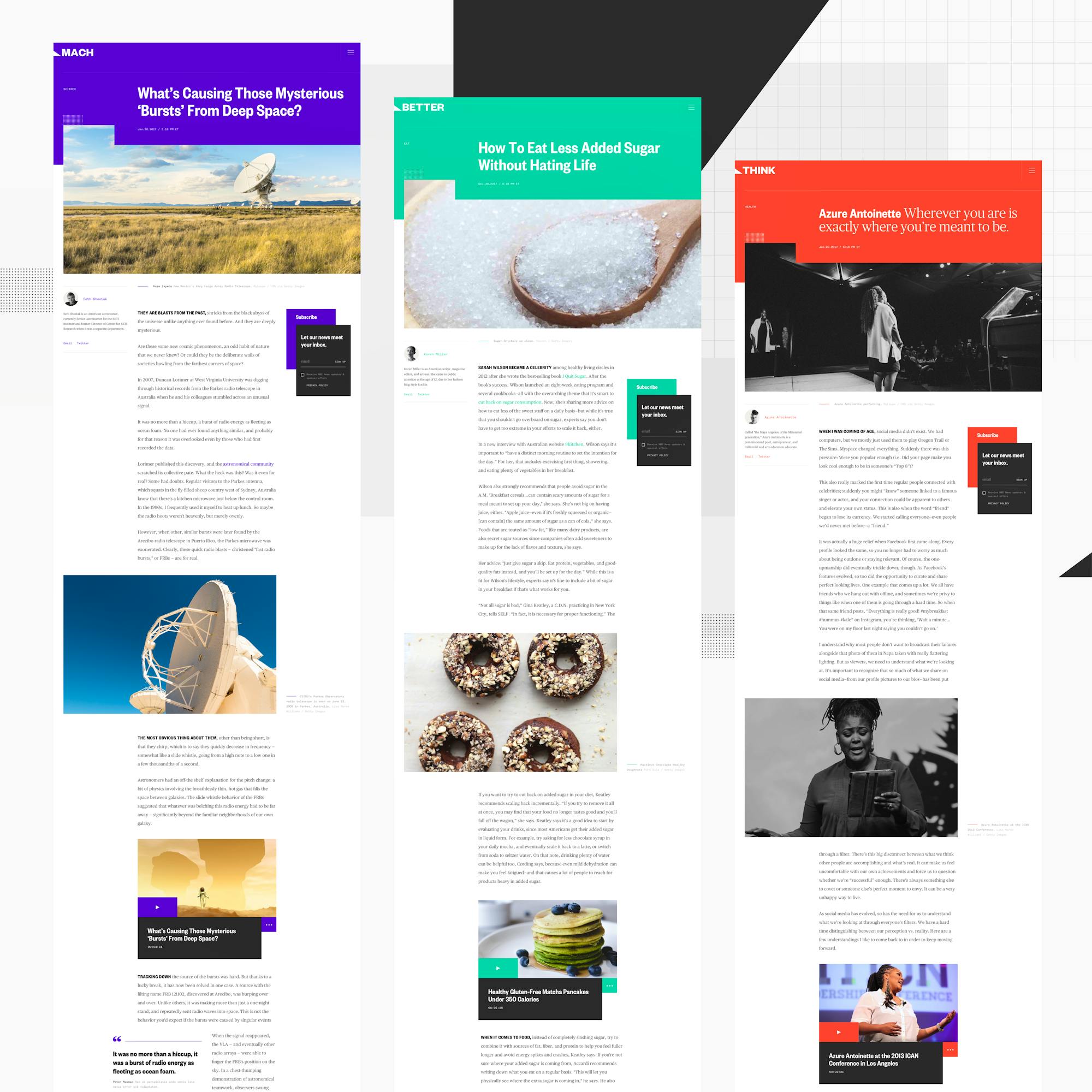
2
The Strategy
Early on, the NBC News team made two key decisions about the vertical’s business. The first was to focus on building a distinct and loyal audience based on an affinity for the content and POV on each vertical. The second was to pursue a sponsorship-driven ad strategy for launch.
Freed of the need to push audience and display impression-driven scale at all costs and given the clean sheet of paper that comes with a new launch, we focused our experience strategy on capturing and retaining high-value users and offering advertisers more bespoke ad integrations that would be possible on large, existing properties. We wanted to amplify the impact of the stories and drive more meaningful, long-term value for audiences—and ultimately, for our advertising partners.
This required stripping down the editorial toolkit to its most basic parts and then building it back up. Through that process we laid the foundation of a scalable modular system with a library of necessary page components that met the core storytelling and packaging needs of each vertical, that can be stacked, arranged, and repurposed on any page in numerous ways. The approach opened us up to refocusing on storytelling craft, doing more with less, and allowing editors to easily manage curated and dynamic content packages with variable visual hierarchies and content densities to give each vertical a distinct voice and feel.
Our strategic framework focused on re-establishing audience connections with NBC as a trusted news source, through the stories we delivered and the perspectives we wrapped them in and to do that at scale with advertisers integrated into the storytelling framework.
We make every effort to think about the user experience from inception. How our journalism is delivered to our audience is just as important as the journalism itself.
3
The Solution
Make a Connection
We built a limited, but flexible, set of storytelling tools that allowed editors to focus on creating a strong editorial voice and building trust in our ability to deliver engaging and immersive original content responsive to the user's context.
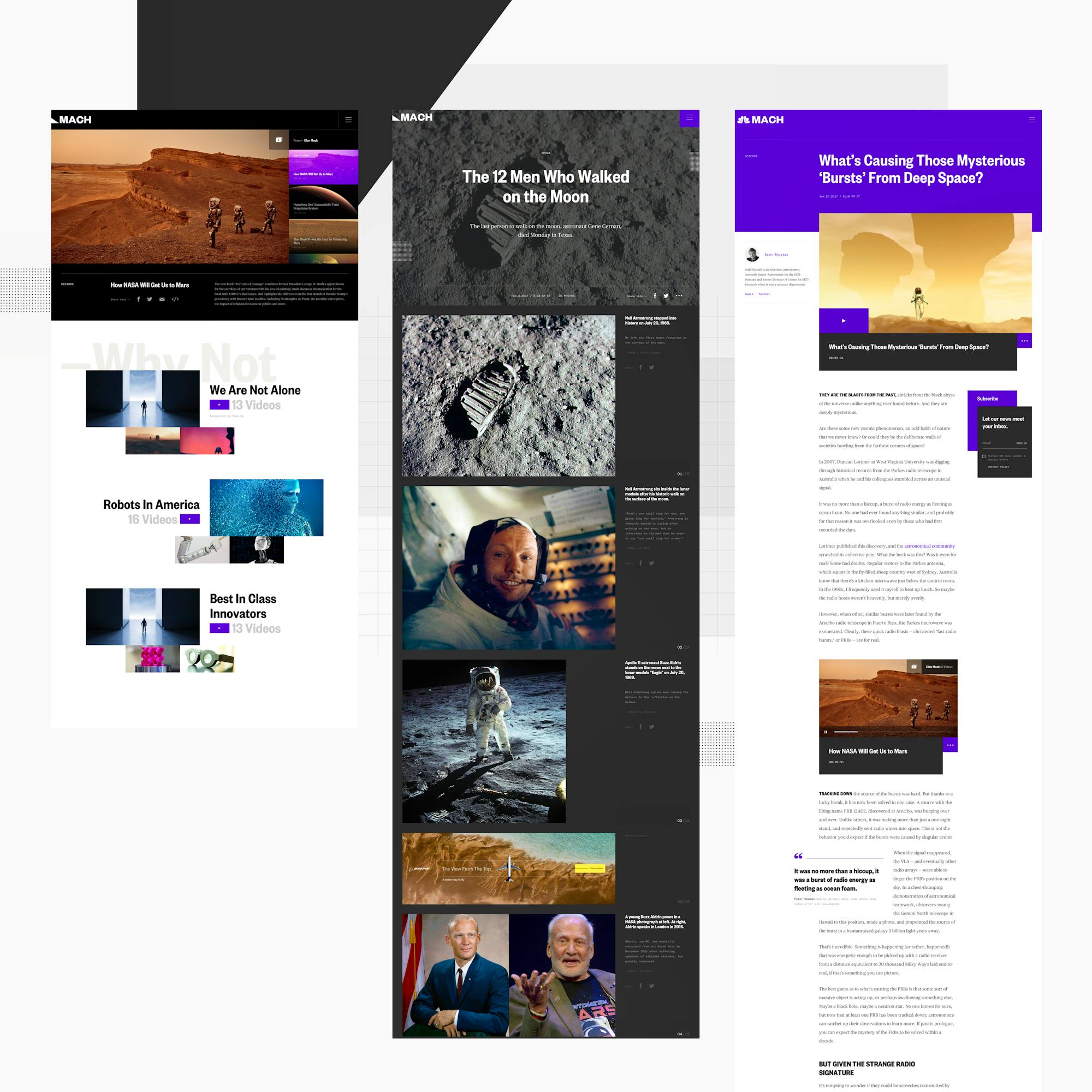
Organize for Perspective
We solved moving users forward in their content journey and exposing them to the larger perspectives of the vertical narrative by seamlessly transporting them into vertical fronts constructed with a library of reusable content packages.
We’ve also improved the CMS workflows to allow for editors to create and manage verticals and sub-verticals so that they could focus on guiding users to what is relevant and important at the moment.
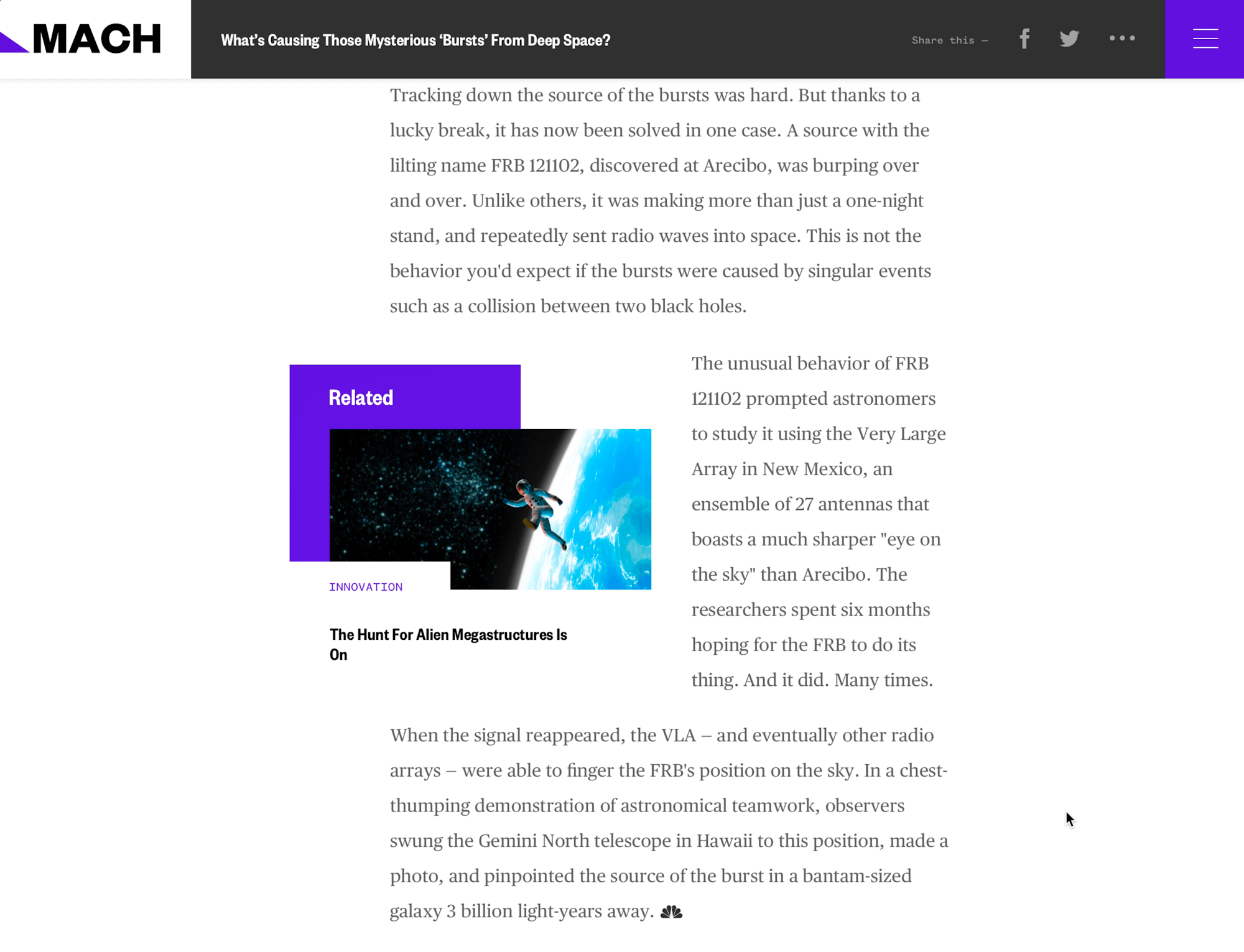
Built for Scale
We designed and developed a modular and scalable design system that could extend far beyond the verticals we launched. The packages were created to flex across variable content densities and to address unique editorial and content type needs. Ultimately, each bucket was constructed to work dynamically and allow editors to not just curate content, but also editorialize it with inline quotes or media.
Knowing we would be adapting this framework to changing user needs across an evolving set of verticals and brands, we laid the foundations for a living style guide and a future implementation of React, building our own custom javascript framework called “Ramen.”
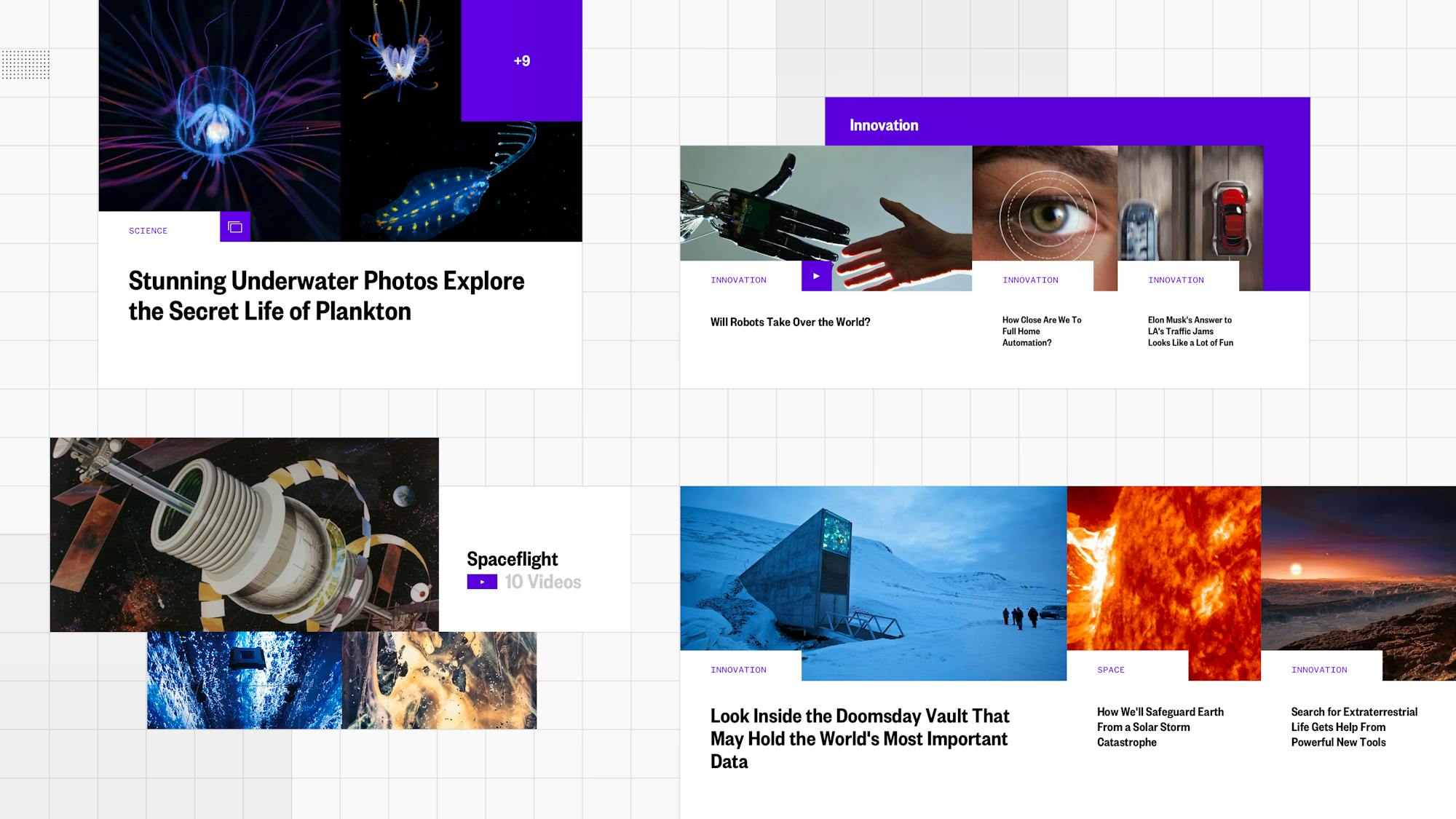
Sell for Loyalty
We solved for variable monetization integrations that enhanced our design system instead of overpowering it and focused on amplifying the impact of our stories by prioritizing user loyalty over volume.
We built toward a responsive IAB future while remaining compatible with legacy standards. By maximizing the visibility of our ad units, like our Ping Pong units on front pages that switch from the left to the right rail on scroll to combat ad blindness, we were able to seamlessly integrate fewer but higher impact ads into the experience.
Lastly, we built a foundation of tools that allowed for variable sponsorship integration. The toolkit ranges from our editorial tools to tell branded stories to different levels of content sponsorship and packaging to high-impact narrative-based ad units that maximized partner integration into the overarching vertical narrative.
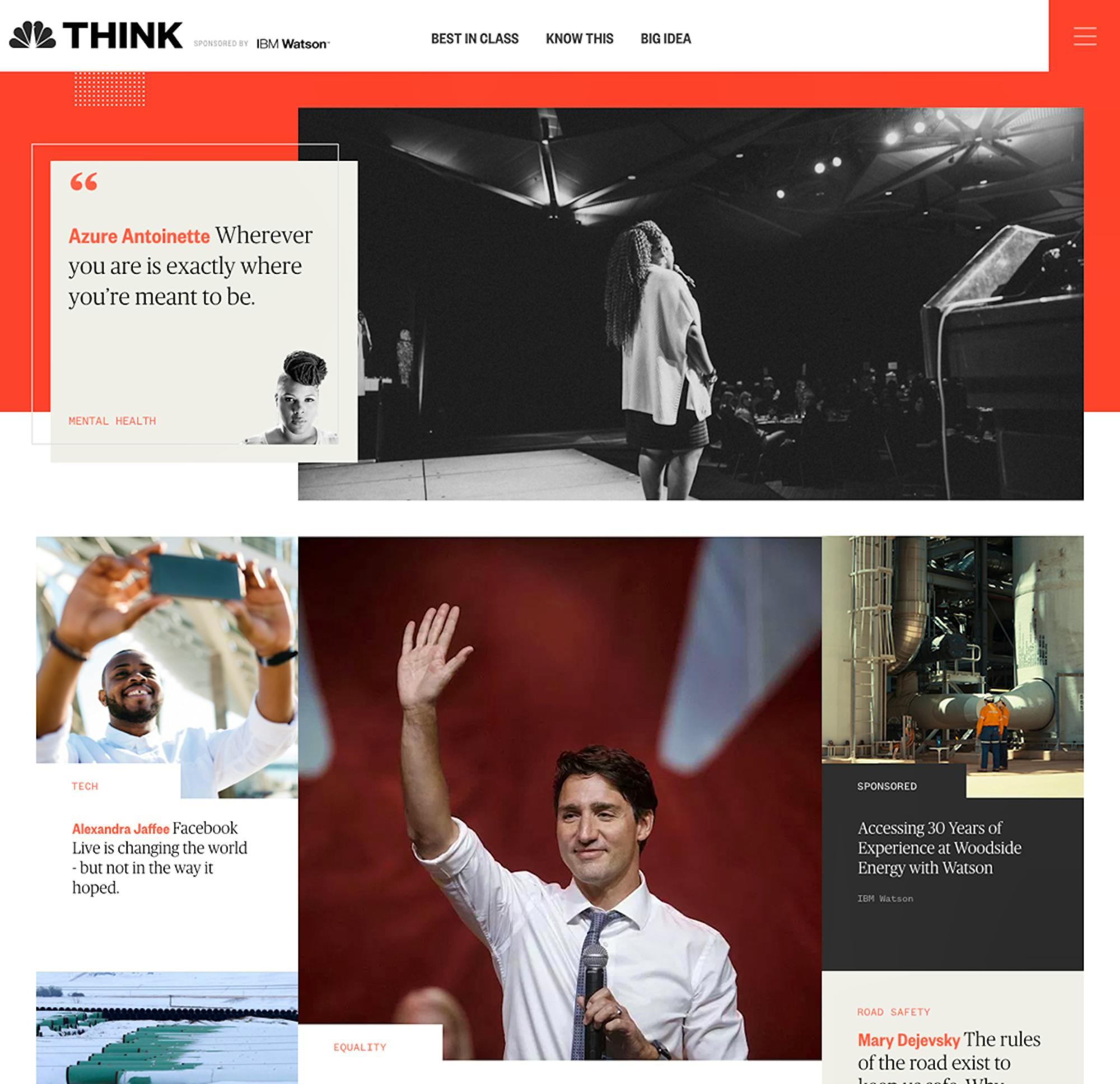
4
The Technology
We co-located with our client partners to deliver the technical processes, tools and architecture NBC needed to improve the velocity of its team and the quality of what it was able to produce.
We moved to a more scalable front-end framework (React.js), delivering a flexible content API layer (GraphQL) and improving the release process (CI/CD - Gitflow, Jenkins). We also paired down the amount of applications in the web stack by unifying all of their properties onto a single front-end application and API.
An iterative, phased approach was critical since the site was heavily monetized through ad traffic and the build was complex. The initial launch was on three site verticals—Mach, Better, and Think. This allowed us to test our strategy and fine tune any technical issues ahead of a wider rollout across NBC.
After the initial vertical launch, we iterated on what we had built and began development of features needed for a wider rollout. For the global rollout, we leveraged Akamai load balancers to A/B test the beta site that routed only a subset of users to specific site sections in order to gather feedback and optimize prior to the full release. Users were able to submit feedback through a form on the site or opt out. This gave us another opportunity to test our assumptions and learn from real data before switching over completely to the new site.
On June 1st, we released Better and Mach. Leftfield followed two weeks after, and Think launched in January 2018. We are currently working to apply the design system to the rest of NBCNews.com, MSNBC.com and TODAY.com.
Technology Used:
- React.js
- GraphQL
- Gitflow
- Jenkins
- Akamai A/B
5
The Conclusion
On June 1st, we released Better and Mach. Leftfield followed two weeks after, and Think launched in January 2018. We are currently working to apply the design system to the rest of NBCNews.com, MSNBC.com, and TODAY.com.
Since these verticals are what we like to call ‘near-news’ content, we wanted to create designs that help tell more visual stories and compelling features in the case of MACH, more engaging and personable service journalism for BETTER and a more ‘voice-y’ and personality-driven feel for opinion pieces on THINK. The new designs and layouts reflect those wants.